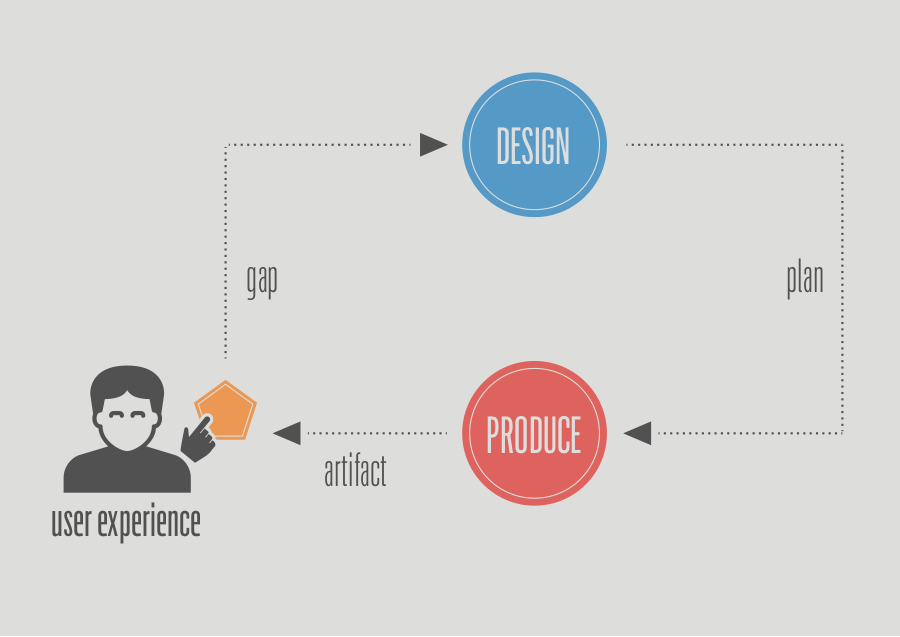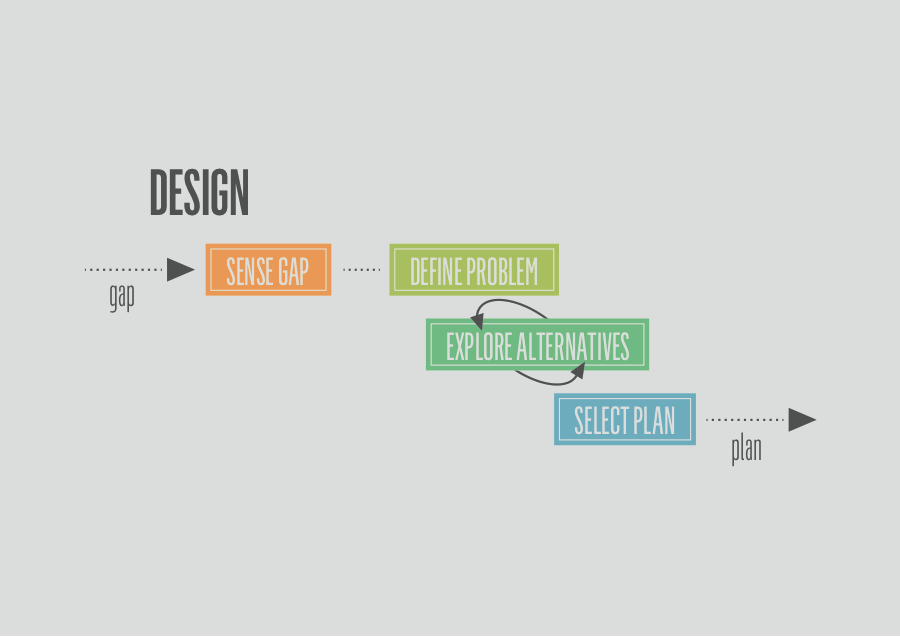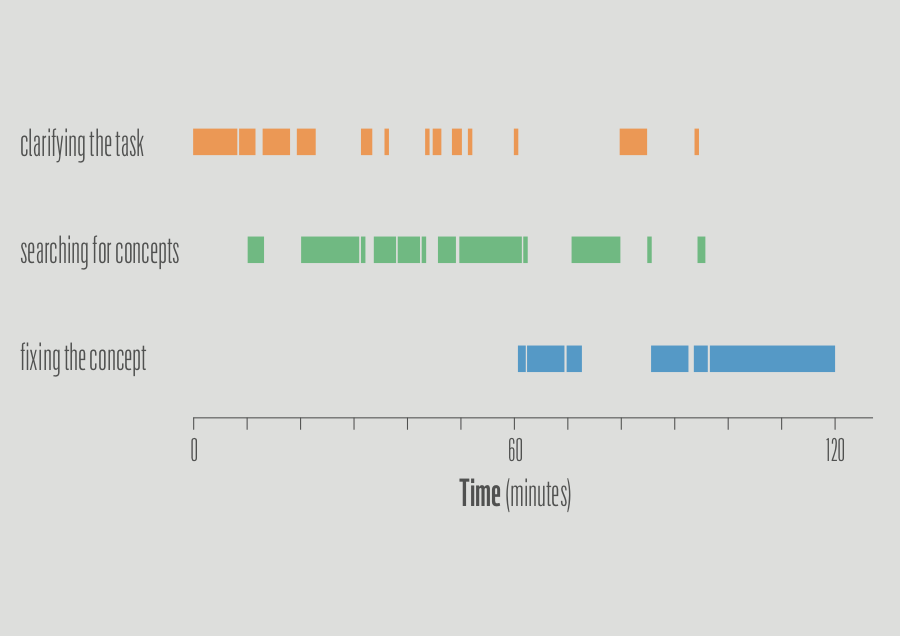A designer’s job involves reaching a certain destination, often without being given clear direction of where to go. Many designers will confirm that this can lead them to complete a series of tasks over and over again—a process that, as a whole, can become repetitive. Following a framework for design can put designers at an advantage by shortening the length of time they spend on a project and by helping their clients to understand their role.
Because design is a fundamental part of creating a product that appeals to users, designers want to ease the life of the user in some way or offer something not already available. Design fills a gap.
This article uses a template created by Karl T. Ulrich, Vice Dean of Innovation and the CIBC Professor of Entrepreneurship and e-Commerce at the Wharton School of the University of Pennsylvania, to organize the process of design and enable designers to consolidate ideas efficiently.
In the model, Ulrich reasons that a designer must first sense the gap in the user experience before the design process can start. Once the design process is complete a plan is shaped and the production of the new artifact begins.
Ulrich’s loop is defined in the following diagram:
Ulrich’s User Experience Design Loop. This article focuses on the blue design circle. (Ulrich, 2005-2011 p.6)
The blue design section in this loop comprises of the four steps that complete the process crafted by Ulrich to help bring order to design. In his book, Design: Creations of Artifacts in Society, Ulrich states:
“Design is conceiving and giving form to artefacts that solve problems.”
This point highlights what designers endeavour to achieve everyday, though unfortunately, design can be chaotic. How many times have you seen a project go down one path only to realize later that it should have gone down another? Many factors play into this disorder—a multitude of different solutions, confusion over what the user wants, no attempt to determine the actual problem, and so on. The question is: can design be done more efficiently? Is there a formalized model that designers can deploy to make their results more effective?
Ulrich broke the design process down into four steps:
- Sense the gap: finding the design challenge.
- Define the problem: characterize the nature of the problem.
- Explore alternatives: gather several solutions to the problem.
- Select a plan: choose the solution most appropriate.
Let’s go into more detail with the four steps:
Sense the Gap
During the design process you should find the gap. The gap is something that is causing discomfort or lack of satisfaction around some element of the user experience: you can call it the “design challenge.” While investigating the design challenge, a designer needs to develop a sound understanding of user needs. Studying these user needs can take up most of the work in the gap stage. Here are some ways to identify user needs.
User Needs
User needs are the items that users want in the product in order to be content. In design, user needs are usually captured in verbal statements in a list format. According to Ulrich, for most artifacts there are 30 or more user needs that can be identified and the user needs list can go up to as many as 400. Here are the key facts you need to know about user needs:
- Not all users would make use of a specific user need, that’s why the list is usually so long. The artifact should be designed in a way that it leaves space for all users.
- Two user needs can in fact be contradictory, and the solution should be designed in a way that eliminates these contradictions.
- The list of user needs does not resolve the design problem; it is just an attempt by the designer to capture what’s important.
- Not all user needs are equally important.
- Not all needs are of the same type.
Ultimately, understanding user needs translates into understanding people and developing empathy for their situation. Pete Smart explained this concept well in his article, “50 Design Problems In 50 Days: Real Empathy for Innovation (Part 1).”
“Empathetic research helps us understand our users’ needs beyond the functional, enabling us to develop more appropriate design outcomes. It is one of a raft of valuable processes and tools, on its own seemingly no more important than any other. However, while good designers understand the tools, great designers understand people.”
There are several approaches used to sense the gap in the user experience and understand the user needs for a project. It starts with checking the current system to find potential elements that create discomfort. This is followed by several meetings between management, system analysts and graphic designers to decide what the user’s needs are. Only then can you have clear understanding of what actually needs to be enhanced in the final artifact.
Define the Problem
The problem definition phase aims to characterize the nature of the gap so the designer can internalize what the problem is and how it can be solved. Defining the problem is a key step in the design phase but one that is often overlooked. Albert Einstein put it perfectly when he said:
“If I were given one hour to save the planet, I would spend 59 minutes defining the problem and one minute resolving it.”
Defining the problem is a key step in the design phase but one that is often overlooked
The problem stage requires patience as you pinpoint what the problem actually is and what gap needs to be closed. It’s normal to study several gaps before you focus on the problem that needs addressing the most. One way to tackle this phase is to create a scope definition to define the problem. The scope definition can be done in two parts:
- Write a scope statement that explains the gap you are addressing without mentioning any possible solutions.
- Compile a more detailed list of user needs and requirements that relate to the problem.
The key with your problem definition is to stay general and broad. To generalize the problem statement and make it broader you can try the “5 Whys” technique, used in the analysis phase of the Six Sigma DMAIC methodology. The 5 Whys can typically help to get to the root of the problem in five iterations. Here’s how this works:
- Ask a question about the problem statement in a form like “What happens when __problem statement__?” For example: “What happens when our mobile app freezes and shuts down on Android devices?”
- Next answer the question (normally the answer leads to a broader level).
- Then ask the same question again for that answer, for example, “Why did the conflict with Android occur?” The questions keep going until you reach five whys or you find the root of the problem.
It’s important to remember that this is not the stage to come up with a solution. Additionally, you could characterize the gap to help in the problem definition step: Is the problem aesthetic? Related to production costs?
Once you have a concrete problem definition, you are ready to start discussing step three, the alternative solutions to the problem.
Explore Alternatives
The alternatives stage is the hallmark phase of Ulrich’s four-step template for design and is arguably the hardest part.
During this stage you need to explore all of the alternatives and build up a map of all possibilities to fill in your gap. You need a decent set of alternatives before you decide to make an informed decision on the right way to go. The goal here is to find out what your options are, have idea of what the best solution will look like and ultimately eliminate bad ideas before you select a plan.
This shows the four stages of the design process covered in this article. (Ulrich, 2005-2011 p.6)
Ways you can explore your alternatives are:
- Surveys or questionnaires: Best when you have a big audience to collect their discomfort, feedback and ideas.
- Meetings: Organize focus groups that include the right people based on their past experience, especially if those experiences are related to the app/website in progress.
- Observation: It might be necessary to visit the business location and observe how people work and how they interact with the current system. Observation is helpful if the solution includes hardware setup, like an app that needs to run on a touch screen. If this is the case, then you need to know the location, lights around it, if users interact with those screens while standing up (ATM-like) or sitting down. These factors will affect the whole design and the approach towards the solution.
- Document review: Some projects may find use in checking the organization’s documents, how they are structured and how they get drafted, reviewed, published, and so on. Document reviews help with heavy data management apps to define the attributes and workflows of their documents.
- Meetings can be organized in a way to help maximize the output efficiency: Two ways you can structure these meetings is by taking minutes of each meeting or organizing the meeting room in a certain way with round tables so people have to face each other.
This stage is probably the most iterative and jumping in between tasks is normal and encouraged.
A note on iterative design
One last essential and important characteristic of the design process is that it’s iterative. One might think in the beginning that the process is sequential and can be executed in this way. However, in reality, as you explore more alternatives you get more clarity on the problem, and as you select a plan you might face new challenges or even get more clarity, which will require more research, taking the flow back to exploring alternatives. You are basically jumping all over the place.
The diagram below displays two working hours of a designers’ team and shows how the flow of the three pieces of the design process is not strictly sequential; designers keep jumping around from clarifying the task (aka defining the problem) to searching for concepts (aka exploring alternatives) to fixing the concept (aka selecting a plan), and back.
Iterative design as explained by Ulrich. (Ulrich, 2005-2011, p.7)
Ulrich believes that the iterative nature of design has two different types. It could be at a micro-level, where a designer keeps iterating over the pieces of the design process in the scope of one project (like the diagram above). Or it could be at a higher level, in the scope of multiple projects or artifacts for a single organization, sometimes on the scale of multiple generations. This is being innovative, or trying to approach a problem that’s been already solved before with a better state-of-the-art solution.
When you have collected several alternative solutions to the gap, it is time to start planning.
Generate a Plan
The planning stage is where you choose the approach that will generate the best solution.
You will likely have more than one solution to your gap and the solution may depend on timelines and costs. You may need to compromise. You may also have more than one good solution in which case you will begin by prototyping each solution to help make your choice. You might even test your prototypes on users and make your decision based on their feedback. Again this all depends on time and budget.
The design process includes figuring out unknowns like “what,” “why,” “can,” “is it possible,” and so on. The plan stage is the time when you need to assemble all the findings together and pick a proper combination of alternatives to formulate the best design for the challenge. The plan should describe in detail what will be built, how it will be built, what tools need to be used, what technologies are needed, the outline for each step, and so on. It’s the “how to” plan or specification that can be executed immediately with no need for any further research.
“Exploration typically exposes more than one solution, so design requires some sort of evaluation and selection from among alternatives. Some designers consider many alternatives simultaneously when selecting a plan. Others articulate, evaluate, and refine plans iteratively and select the first plan that is good enough.” (Ulrich, 2005-2011)
Conclusion
So, what is good design? Ulrich concludes:
“Design quality is derived from how well the artifact satisfies user needs, and thereby closes the perceptual gap in the user experience.”
As a designer you can ask yourself the following to ensure you covered each process in Ulrich’s model: Did you understand the problem? Did you study and position the problem in such a way that a good solution could be designed? Was the final product consistent with the solution and the plan?
From a designer’s perspective, there are lots of high-level software and design principles and patterns available. What makes good design consists of two indicators: abstraction and conceptualization. By this we mean that the artifact should be broken down on a high-level into multiple layers and on a detailed level into multiple pieces. Each layer or piece does something specific. If this is done correctly, it implicitly implies that other important principles will be satisfied such as mobility, extensibility, maintainability, and so on. Piecing this puzzle together is what makes good design.
Ulrich’s model was formed to give a unified framework to design and can be used as a structure when you tackle your own design problems in many fields. If you want to learn more about problem solving and design, take a look at the must-reads below:
- Design: Creations of Artifacts in Society, Karl T. Ulrich (University of Pennsylvania: 2011)
- Are you solving the right problem? Dwayne Spradlin (Harvard Business Review)
- 50 Design Problems In 50 Days: Real Empathy for Innovation (Part 1), Pete Smartsolving-design-with-ulrich (Smashing Magazine)
Do you have a system in place for your design process? Is it similar to the one described by Ulrich? Share your thoughts below.
Illustration of idea bulb courtesy Shutterstock.










